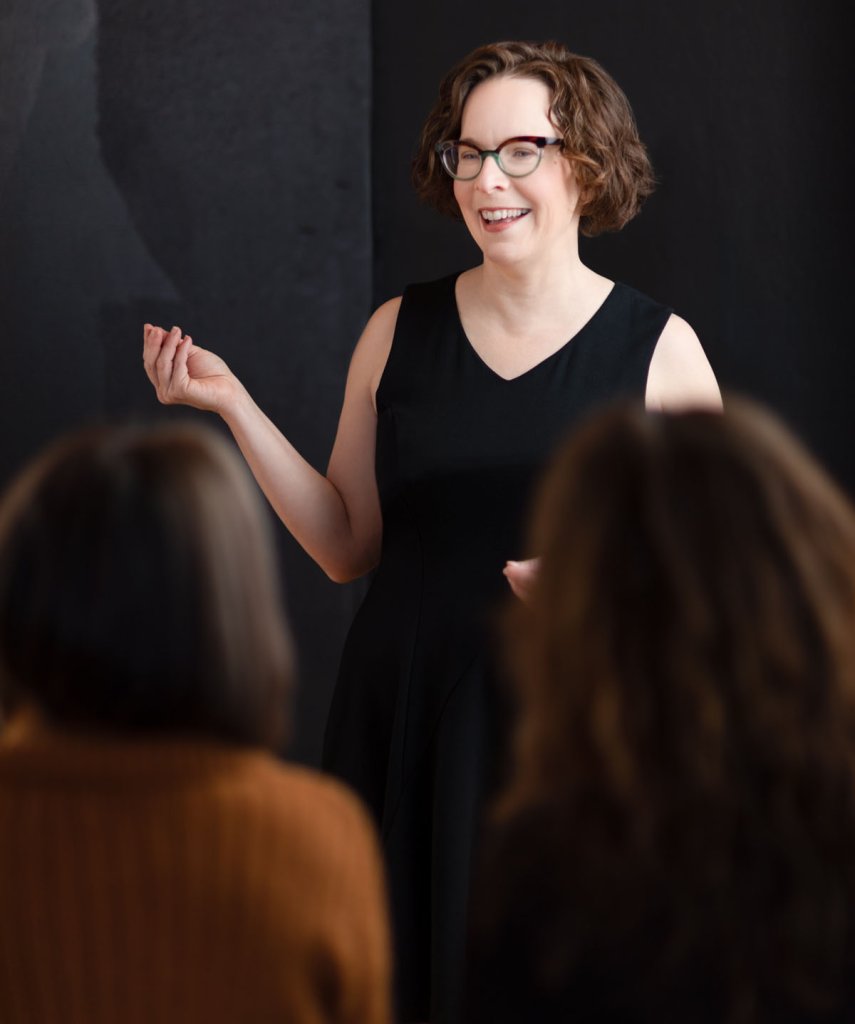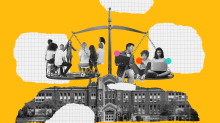Helping Teens Navigate the Tricky World of Too Much Tech
In a world where their lives are heavily ‘shared and compared,’ author Devorah Heitner offers insights on how to support teens in finding balance in their tech-heavy lives.
Your content has been saved!
Go to My Saved Content.Kids today aren’t just growing up with the internet, they’re growing up under its watchful eye. As early as kindergarten, behavior management apps can track and record everything from the number of times students demonstrate good listening skills to how often they speak without raising their hand.

As kids get older, they begin crafting intricate online personas and expanding their social footprint with an audience in mind. All the while, their academic performance is often heavily scrutinized by their teachers and families via schoolwork management apps. The click of a button reveals every assignment or quiz, every grade and test score, every time they were late to class or didn’t show up at all.
Author and researcher Devorah Heitner refers to this digital scorekeeping as a “culture of surveillance,” and she has serious reservations about the amount of behavioral data that schools are collecting, how that data is used, and whether these processes are equitable. She aims to help schools think carefully and critically about the role they can play in helping students find balance in their increasingly digital lives.
In the 2000s, as sites like MySpace and Facebook were growing in popularity and cell phones were becoming ubiquitous, Heitner recognized that adults needed helpful, supportive information about young people and tech. “I was interested in sharing research that would help adults make decisions—parenting decisions, policy decisions at schools, even decisions around designing apps—that were informed by young people’s experiences,” she says.
Heitner’s new book, Growing Up in Public, provides educators with exactly that: evidence-based insights and suggestions for helping students navigate everything from issues of identity and privacy to setting safe boundaries and finding a sense of wellness amid the digital noise—informed in part by her interviews with teens themselves.
I sat down with Heitner to discuss creating a healthy relationship between teens and technology, the right and wrong way to teach digital footprint, and helping students find their place in the world, online and off.
Paige Tutt: You spoke to a number of teens for your book. How did they feel about their academic performance being so readily available online?
Devorah Heitner: A lot of them were stressed out by it, especially when it causes conflict at home or with teachers. What I noticed is that it turns the relationship with their teachers specifically into a transactional one, which teachers said as well.
Kids get very, very focused on micro-titrating their efforts toward small changes in their GPA. For example: “I have a 3.603, but I could have a 3.7…”—instead of focusing on learning.
Tutt: Do you have any suggestions for helping kids who may compulsively check their grades online?
Heitner: Based on the recommendation of folks like Challenge Success out of Stanford, schools are sometimes turning off the portals during the week, on the weekends, late at night, or during the school day. We have to limit kids’ access. The grade book should not be open 24/7. Students should have other ways of gauging how they’re doing in class.
Every semester in every class, educators need to be giving kids substantive feedback on their work, not just using these apps. I understand that if you have hundreds of students in a large public high school, maybe you can’t do that for every assignment. But if you can do it for some assignments, and make sure students internalize feedback that goes beyond a number or grade, that’s really what’s needed to get students unhooked from seeing themselves as a data point on a chart.
Tutt: I remember feeling anxious about the idea of digital footprint when I was in high school. It felt really nerve-wracking that colleges may be researching me. Do kids still feel the same kind of anxieties that impacted earlier online generations?
Heitner: Kids are still worried about being searchable, and sometimes more than they need. In fact, they’re not that searchable. Colleges aren’t going to do a deep dive into everything you post. A job later on might. But if you’re one of 90,000 people applying to SUNY Binghamton, that’s not going to happen. It’s also not the reason to not post things that are problematic.
Tutt: I have such vivid memories of my grandfather telling me to never be in a photo with a red Solo cup—how the cup was a signifier of underage drinking. The message was not that I shouldn’t drink in high school, but rather there shouldn’t be documentation.
Heitner: I think ideally the message, especially with what we know now about the teenage brain, should be don’t drink before your brain is fully formed, and don’t use other substances. It’s also fine to say to kids, “If you document your friends drinking underage, you’re contributing to harming their reputation, and you don’t want to do that either.” Yes, your friends shouldn’t be drinking, and also don’t photograph your friends drinking and share it.
I think kids are also worried about being canceled by their peers because of something their friends post or a video of them saying something stupid—or worse than stupid, offensive or problematic—and then sharing it widely.
We need to focus on making sure kids know not to do harm and teaching them to be in alignment with their own values when they post. Telling kids they won’t get into college if they post something is actually just telling kids not to get caught, which is a very negative and harmful message.
Tutt: Beyond social media, cell phone use in general has become a huge issue. Many schools are outright banning them. Classrooms across the country are battling against them for student attention. Where do schools go from here?
Heitner: No matter how engaging you are as an educator, the TikTok algorithm is designed to ensure all 30 of your students are looking at the thing they’re the most excited about, and there’s no way you can compete with that.
I think teachers should be able to say, you need to put these things away. I also think Chromebooks and other devices schools are giving out can sometimes be distracting, and many teachers could use more support on how to navigate that.
Tutt: I visited a school in Denmark in January where kids are not able to access their phones, even during their lunch or study hall. It did seem as if they were getting a lot more work done.
Heitner: Maybe that’s a good thing. As much as I want kids to learn to self-regulate, TikTok versus biology class isn’t really a fair contest. Teaching self-regulation is great, but making sure kids are in an environment conducive to learning is more important. Maybe that’s an environment where you don’t have social media.
Coming from me, it might sound like a departure because I really believe that kids should have a lot of autonomy around the ways they use tech. But I also think school needs to just be more interesting, too. The lesson here shouldn’t be, “Take away their phones and they’ll listen to the teacher.” That might not work either. You also need to think about how we can make school more interesting, more engaging, more participatory.
Tutt: It sounds like there’s probably a happy medium between online and offline experiences. What can schools do to help students develop a better understanding of leading balanced lives?
Heitner: I think any messaging you can do about sleep and putting devices away at night, especially with adolescents, is important, whether that’s athletic coaches talking about how many fewer injuries and mistakes people make in their sport or the chess club adviser or the choral leader talking about how much better we perform when we’ve had enough sleep.
Don’t forget you can give some assignments that aren’t on the Chromebook. You can direct kids to do things in their own community or have face-to-face conversations. We don’t have recess at the high school level, but consider giving kids social opportunities in class to actually talk to each other.
Remember, those skills are important. We don’t want to graduate students who don’t have any ability to hold a face-to-face conversation. We just need to balance all the Chromebook or tablet work.
Tutt: Social media can be a safe haven for some kids, a place where they seek refuge and find support. How do schools create a stronger sense of community where students can find in person some of the things they often look for online?
Heitner: So much of the work kids are doing online is seeking mental health assistance, finding affinity support—regarding LGBTQ+ issues and other identity-based work. I think schools should focus on making sure that those spaces are available in person and virtually.
Maybe a student is only comfortable joining the school LGBTQ+ Discord, and they’re not gonna come to an in-person meeting just yet. Can there be a supportive online space that mirrors that physical one? Additionally, we can encourage kids to feel safe coming in person and provide things like a number you can text to get mental health support. I think we need both ends.
Educators just want to be involved in this conversation about kids growing up in public. I think we all want to transform the conversation about reputation to look at the more positive aspects of being part of online communities, not just the negative.
This interview has been edited for brevity, clarity, and flow.
